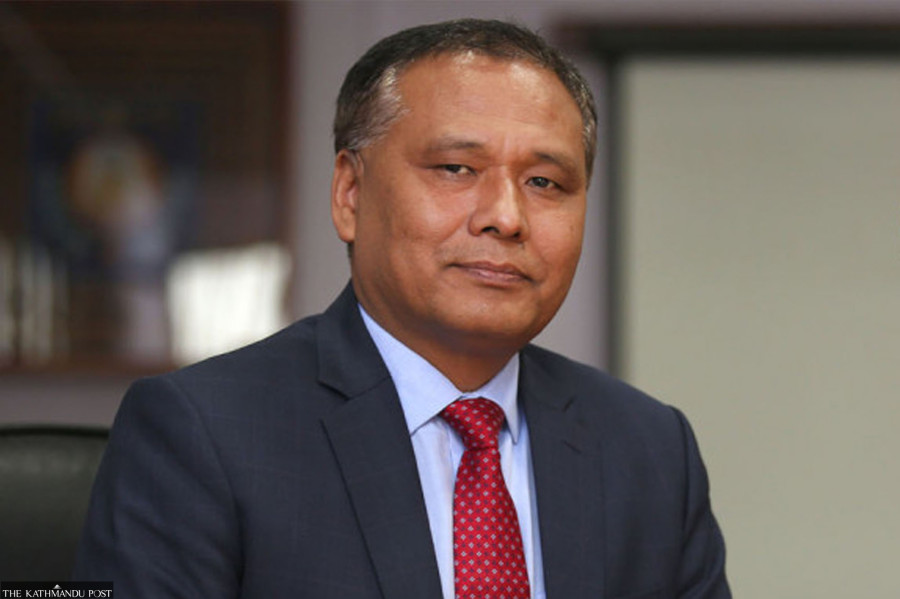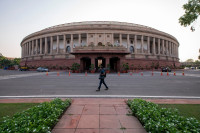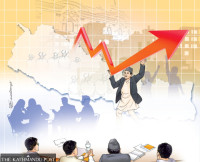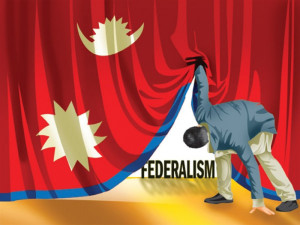Columns
Being Kulman Ghising
Ghising’s case is a window into the deep political influence that has rotted Nepal’s power sector.
Bishal Thapa
For over a decade, Nepali electricity consumers endured long hours of power cuts (or load shedding), sometimes up to 18 hours a day. These outages were the result of electricity supply shortages.
Within two months of taking over as Managing Director of Nepal Electricity Authority (NEA) in September 2016, Kulman Ghising announced that load shedding had ended in Kathmandu. A year and a half into his tenure, Ghising declared the end of load shedding across Nepal.
NEA is Nepal’s monopoly electric utility that controls generation, transmission and distribution and operates the power system.
Ghising was widely credited for ending load shedding, earning tremendous public support in the process. He was a folk hero, until recently that is. Earlier this year, on March 24, only a few months before his second term as NEA’s managing director was to end, the government removed him from the post after determining that he had failed in his duties.
It wasn’t Ghising, but India, that had ended load shedding, Dipak Khadka, the Minister for Energy, Water Resources and Irrigation, said in Parliament. With that, the energy minister fired Ghising from his post at NEA and stripped Nepalis of the glory of having a local home-grown hero.
Politics is fickle
Ghising was as much a beneficiary of political influence as he is now a victim of it.
Both of Ghising’s previous appointments as ‘NEA’s managing director’ in 2016 and 2021 were politically directed. In 2016, several senior officials at NEA protested his appointment. Some even resigned. The Supreme Court issued a show-cause notice asking the government to justify Ghising’s appointment as NEA’s managing director. The competitive process through which he had been selected was widely recognised as a charade. It was clear that the energy minister at the time, Janardan Sharma, had wanted Ghising for the role.
In 2021, the then energy minister, Pampha Bhusal, fired Hitendra Dev Shakya from the post of NEA’s managing director and put Ghising back in charge. At that time, Shakya had been in the post for only a few months when minister Bhusal fired him. Four years later, Shakya now replaces Ghising, and the musical chair that dances to the minister’s tune continues at NEA.
The role of managing director of NEA is a critical position, requiring the trust and confidence of the political leadership. At the same time, NEA can only be an effective power utility if it remains politically independent, with strong corporate governance, an effective board and an empowered management that is equally responsive to the customers it serves.
The brazenness with which ministers and the political establishment have appointed and fired NEA’s leadership makes it clear that the agency is far from independent. In fact, NEA has always acted as an instrument of the Government, an arm through which the energy minister and government can make decisions and exercise policies.
This political interference within NEA is at the core of Nepal’s challenges in the power sector. It has enabled and institutionalised widespread corruption, not just within NEA but across the entire energy sector.
The many years of load shedding that Nepalis endured. The poor reliability of electricity supply. The financial losses at NEA. The supply shortages and weak distribution and transmission infrastructure. The vulnerabilities from the excessive reliance on electricity imports from India. All of these are products of many years of accumulated mismanagement and corruption—sanctioned and protected by political interference at NEA.
Kulman’s legacy
By all counts, Ghising had a successful run over his two terms at NEA. Under him, NEA returned to profitability. In 2023-24, for instance, it posted profits of Rs14.5 billion, the highest in its history.
For the first time, in 2023-24, Nepal became a net exporter of electricity to India, earning Rs137 million more from exports than imports. That year, NEA imported 1,845 million units (GWh) and exported 1,946 GWh, earning Rs17.1 billion from exports while paying Rs16.9 billion.
Ghising expanded electricity access, taking the national grid to over 97 percent of households in 2023-24, up from 68 percent when he first took over in 2016-17. He reduced systems losses to 13 percent in 2023-24, down from 23 percent in 2016-17.
In part, Ghising secured these achievements because he drew upon his political support and patronage to secure the changes he wanted. He shifted staff around and decided who should serve where. The board deferred to what Ghising said and wanted. The Ministry of Energy outsourced policymaking on electricity to NEA.
Over much of Ghising’s two terms, NEA became not just the power utility but also the policy maker. He dictated the energy sector narrative, defining, for instance, the choices that Nepal should make on the import and export of electricity. He pushed Nepal firmly within India’s power market, often at the expense of domestic load. Electricity supply to rural communities, particularly the agricultural sector, remains underserved because NEA decided there was no demand to serve.
Ghising’s leadership of NEA offered no opportunity for recourse, no ability to challenge the narrative and no checks and balances. There were widespread rumours that Ghising was eyeing an election run. But he didn’t need an election—for all practical purposes, Ghising was already the de facto energy minister.
Perhaps it was this heady mix of unbridled authority that was to be Ghising’s undoing once the political leadership changed. Under Ghising, NEA pursued industries that had not paid for the electricity supply that they had received through dedicated lines during load shedding. He made it a mission to collect approximately Rs22 billion in unpaid bills from these industrial customers. Last year, he cut power lines to these defaulting industries and required the cabinet’s intervention to restore them.
For a savvy operator who had demonstrated tremendous political acumen, Ghising’s approach to seeking payments from defaulting industries was unusual. The issue clearly required a crafty political settlement. If anyone in Nepal could pull it off, it would be Ghising. Yet he went head-on after the defaulting industries, eschewing opportunities for a politically negotiated resolution to the issue.
Only Ghising and the energy minister will really know how much this issue contributed to his premature departure from NEA.
Lessons
Many donors were drawn to Ghising’s handling of the power sector. In 2023-24, for instance, the power sector received approximately 28 percent of the $1.6 billion in loans and grants that were disbursed to Nepal.
The allure of stability and execution capabilities that strong leadership offers are understandable. But individual leadership alone is fleeting if the underlying institution that will carry the mission remains weak.
The lesson from the enigma of Ghising is that institutional strength and maturity matter much more than individual prowess. No one individual, however talented or skilful, can deliver all the changes that are required. In the end, individuals are subject to all sorts of whims and fancy, political pressures and their own motivations. Strong leadership is essential, but it is ultimately the strength of institutions that endure and deliver change.
Ghising had the political and public support to reform NEA into a strong institution that could lead Nepal confidently into the future. He chose not to.




 10.12°C Kathmandu
10.12°C Kathmandu













%20(1).jpg&w=300&height=200)

